Fishes
Media

Species Types
Scientific Name
Umbra limi
Description
The central mudminnow is is the only mudminnow that occurs in our state, and it is rare, occurring only in a few marshy locations near the Mississippi River. Mudminnows are closely related to the pikes.
Media
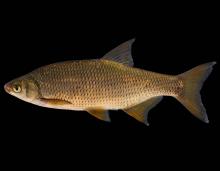
Species Types
Scientific Name
Notemigonus crysoleucas
Description
The golden shiner is a deep-bodied minnow with a greenish-olive back and a faint dusky stripe along the midline. It has a fleshy keel along the midline of the belly. It is widespread in Missouri.
Media
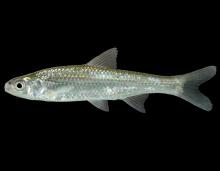
Species Types
Scientific Name
Hybognathus hayi
Description
The cypress minnow, like its Bootheel swampland habitat, is in danger of vanishing from Missouri. On the forward part of this fish's side, note the distinct cross-hatched pattern made by the dark-edged scales.
Media
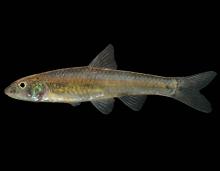
Species Types
Scientific Name
Notropis sabinae
Description
In Missouri, the Sabine shiner is known only from a short stretch of the Black River in Butler County. This slender, silvery minnow has a bluntly rounded snout that projects slightly beyond the upper lip.
Media

Species Types
Scientific Name
Notropis maculatus
Description
One of the rarest Missouri minnows, the taillight shiner is known only from a few localities in southeast Missouri, in habitats representing the last remnants of low-gradient streams and swamps once common in that region.
Media
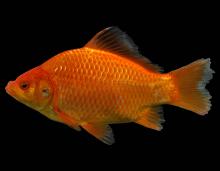
Species Types
Scientific Name
Carassius auratus
Description
Goldfish are not native to North America. They often escape into the wild from bait buckets and other causes, but there are few self-sustaining populations in Missouri.
Media

Species Types
Scientific Name
Cyprinus carpio
Description
The common carp is a "whopper" member of the minnow family. Originally from Asia, it was actively stocked in America in the 1800s and was firmly established in Missouri by 1895.
Media

Species Types
Scientific Name
Moxostoma macrolepidotum
Description
The shorthead redhorse is the most widely distributed redhorse sucker in Missouri, occurring nearly statewide. No other Missouri redhorse is as adaptable in its habitat requirements. Many specimens have a pea-shaped swelling on the upper lip.
Media
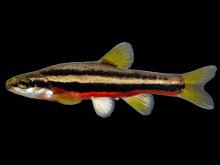
Species Types
Scientific Name
Notropis, Cyprinella, Hybognathus, Luxilus, and others
Description
Minnows — including shiners, chubs, stonerollers, dace, and carp — are members of the minnow family, the Cyprinidae. It is the largest of all fish families, and Missouri has about 70 species.
See Also


Media

Species Types
Scientific Name
Amphiuma tridactylum
Description
The three-toed amphiuma is an eel-like, completely aquatic salamander. It has very small forelimbs and hind limbs, each with three tiny toes. In Missouri it’s found only in the Bootheel region.
Media

Species Types
Scientific Name
Siren intermedia nettingi
Description
The western lesser siren is an eel-like, aquatic salamander with external gills, small eyes, small forelimbs with four toes, and no hind limbs. In Missouri, it’s found mostly in the Bootheel and northward in counties near the Mississippi River.
About Fishes in Missouri
Missouri has more than 200 kinds of fish, more than are found in most neighboring states. Fishes live in water, breathe with gills, and have fins instead of legs. Most are covered with scales. Most fish in Missouri “look” like fish and could never be confused with anything else. True, lampreys and eels have snakelike bodies — but they also have fins and smooth, slimy skin, which snakes do not.





















